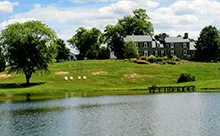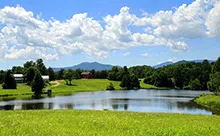Grape Growing in North Carolina
North Carolina’s various climate regions each provide the ideal growing conditions for certain grape varieties. These varieties are then crafted into a multitude of different wines that have gained recognition among wine connoisseurs across the country. One of the most important decisions a new vineyard owner must make is which type of grapes to grow; this decision will depend on demand and more importantly on which climate region the vineyard is located in.
Certain grapes grow best under mountain, Piedmont, or coastal conditions. When grown in the correct region, the vines will produce grapes with intense flavors that allow winemakers to craft wines with unique depth of flavor. For those starting a new vineyard, the number of varieties selected will depend on the amount of land dedicated to grapes. Those looking to grow grapes on one to two acres should limit themselves to a single variety in order to get a sufficient quantity of grapes to sell.
If more acreage is available, more than one variety might be more profitable as this helps to spread out the risk associated with agriculture since certain varieties are most resistant to frost and disease, and demand might decrease for a particular variety.
While some North Carolina wineries use hybrid grapes, the majority use vinifera, muscadine, scuppernong, and labrusca, depending on their location. Bunch grapes including vinifera, labrusca, and certain French-American hybrids flourish throughout North Carolina’s Piedmont and mountain regions. In the coastal plain where winters are only moderately cold and snow and ice pose less of a threat to vines, muscadines are more popular.
Best Grape Varieties for North Carolina
While the grape varieties chosen for a particular vineyard will depend on many factors, these are the most popular grape varieties for North Carolina’s climate and soil:
- Vitis vinifera: This traditional European grape species produces wine reminiscent of that produced in Europe and California. Most all of the familiar wine varieties are produced from cultivars of Vitis vinifera, though only a few of its thousands of varieties are of commercial significance for wine production. While the climate of Vitis vinifera’s native regions differs slightly from that of North Carolina, new agricultural developments have allowed viticulturalists to successfully grow these grapes in North Carolina’s Piedmont and mountain regions. A few of Vitis vinifera’s most notable cultivars include Chardonnay, Merlot, Cabernet Franc, Cabernet Sauvignon, and Viognier.
- French-American hybrids: Crosses between traditional European Vitis vinifera grapes and American varieties naturally suited to North Carolina’s climate have proven immensely successful in the state’s Piedmont and mountain regions. Because North Carolina’s mountainous regions experience more severe winters than the Mediterranean and central Europe, the cross between immensely popular but less hardy European wine grapes and native American grapes allows North Carolina vineyards to grow disease resistant, hardy grapes with classic flavors. Cultivars include Vidal Blanc, Chambourcin, Villard Noir, and Serval Blanc.
- Labrusca-type: Another grape variety popular in colder regions of North Carolina is the labrusca grape. Considered the American “bunch” grapes, wines produced with this species tend to be intense and fruity. Since these grapes have such a powerful flavor, winemakers can produce complex and intense wines that highlight the area’s terroir. Cultivars of labrusca include Delaware, Concord, Catawba, and Niagara.
- Vitis rotundifolia: Viticulturalists in North Carolina’s coastal region are presented with a different set of challenges: while winters are less severe than in the mountains, the soil can pose a problem for certain varieties of grapes. Vineyards have found success with Vitis rotundifolia varieties (known as muscadines or scuppernongs), the native grapes of North Carolina. The wines crafted from muscadines are rich, full-bodied and flavorful. Some of the most popular cultivars include Noble, Magnolia, Carlos, Sterling, and Nesbitt.




































